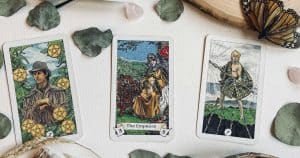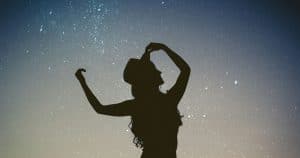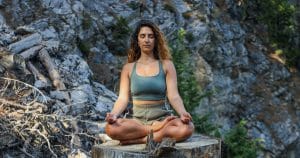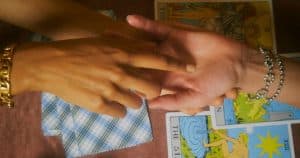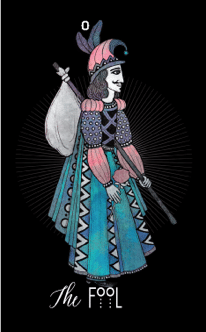
As you move along your path toward peace and enlightenment, you can balance your loftier pursuits by also putting equal attention on the physical plane of existence. Much of our faith based exercises occur outside the realm of the material world, but in reality we spend every moment of our lives in our physical bodies.
Most belief systems emphasize teachings such as “The body is a temple.” Exercise and diet are prescribed in detail in many spiritual practices. But beyond the maintenance of the body, there is a diversity of opinion about how our physical self can be used in a pleasurable exercise that affirms life’s basic joys.
Some religions expressly forbid dance. Others have a rigid code of what is acceptable as rhythmic movement. If you follow your own path of spiritual development, though, and have the urge to dance as a way of expressing your new levels of consciousness, the only thing to learn is how to maximize the experience.
Dancing opens one up to new experiences and connects you to other people. It expresses feelings and emotions and puts us in touch with universal energy. The body is a disciplined servant of the universe that extols the virtues of following a spiritual path. So get your groove on and be one with the cosmos.
Historical Connection
Many cultures have extreme forms of dance associated with their spiritual pursuits. A group in 19th century America called the Shakers did not believe in sexual relationships between people. They would meet to worship and perform elaborate dances that involved near-violent shaking. The exercise was a process of ridding sexual tension in the physical body so that the soul could be nearer to the divine. As popular as the sect was, the fact that none of their believers had sex meant that they had no children and the group ceased to exist.
A few centuries before the Shakers, the complete opposite worldview also found a dance component. In ancient Rome, Bacchus was the god of wine and revelry. Amidst drunken orgies that doubled as worship services, naked dancers writhed in wild gyrations for days on end, as the consumption of pleasure was seen by this cult as the highest form of spirituality.
In Islam, monks who have chosen a life of poverty are known as dervishes. To leave the misery of this world behind, they perform elaborate dances that involve spinning until a dizzying state delivers an almost narcotic connection to otherness. While the whirling dervishes are more associated with the Turkish tourism industry these days, the core desire of their dance was to get closer to their spiritual potential. .
In the Present
Many spiritual teachings have a core belief in dance. We can learn from their rituals without having to adhere to their entire belief systems. Incorporating an appreciation of the possibilities inherent in the human form is a way of advancing one’s self on a spiritual path. Read on to see if the impulse you have to dance reflects one of the following methods of using your body to achieve your elevated aspirations..
Praise Dance
When you have a need to thank the universe for conspiring with you or let the higher power out there understand your appreciation, the words of prayer and thanksgiving may not be enough. You might have to put on your favorite upbeat tune and raise your hands to the sky and move about in ecstatic appreciation. Enjoy the way the whole world advanced your cause and confirmed your faith. The praise dance need not require showing off or a precise skill. The universe that made you celebrates the way you move.
Ritual Dance
If you are part of a community that worships together, dance is a form of communal prayer. There may be parts of your service where you all move your bodies in time to some beat, chant or other sound. When a group dance is spontaneous or improvisational, it is a performance. Prayer is not performed, it is only prayed.
Prayer through communal movement can be a beautiful way to bond with fellow believers, but if the mindset is for people to do what they want or pursue what feels good, the spiritual component of your dance is lost to the realms of social interaction. While this is a noble and necessary function, congregational dance is only communal prayer and a form of spiritual elevation if it has a core ritual beginning, end and movement to it.
Meditative Dance
When you follow a path of spiritual growth but emphasize doing so in solitude, the consistency of a ritual is usually heightened. Repeating actions and mantras is one way to maintain your connection to the process. Meditation is often described as a discipline. Similarly, adding a dance component to your meditative practice may involve ritual.
In this form of dance, precise movements are important and improvisation may excite your energy and distract you from your meditative state. Use your body’s precise movements to explore the depth of meditation. Even walking can be a type of meditative dance, also known as walking meditation. Slowing down and focusing on the minute details of your sensation and movement can be quite centering and calming.
What Are You Waiting For? Boogie!
Whenever you are dancing, you are maximizing your body’s potential and are therefore praising the universe. When you seek to connect on a spiritual level, the rhythmic movement of your physical being is a gateway to this sort of elevation. Embrace the divine in body, spirit and mind. Dance away!




